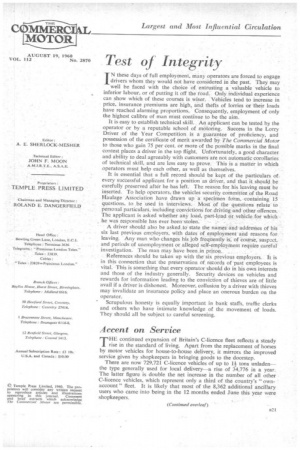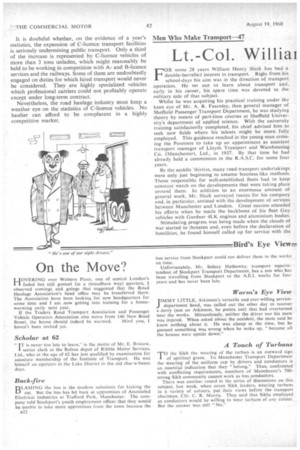Accent on Service
Page 25

Page 26

If you've noticed an error in this article please click here to report it so we can fix it.
THE continued expansion of Britain's C-licence fleet reflects a steady rise in the standard of living. Apart from the replacement of horses by motor vehicles for house-to-house delivery, it mirrors the improved service given by shopkeepers in bringing goods to the doorstep.
There are now 729,721 C-licence vehicles of up to if tons unladen— the type generally used for local delivery—a rise of 34,776 in a year. The latter figure is double the net increase in the number of all other C-licence vehicles, which represent only a third of the country's " ownaccount " fleet. It is likely that most of the 8,362 additional ancillary users who came into being in the 12 months ended June this year were shopkeepers. It is doubtful whether, on the evidence of a year's statistics, the expansion of C-licence transport facilities is seriously undermining public transport. Only a third of the increase is represented by C-licence vehicles of more than 3 tons unladen, which might reasonably be held to be working in competition with Aand B-licence services and the railways. Some of them are undoubtedly engaged on duties for which hired transport would never be considered. They are highly specialized vehicles which professional carriers could not profitably operate except under long-term contract.
Nevertheless, the road haulage industry must keep a weather eye on the statistics of C-licence vehicles. No haulier can afford to be complacent in a highly competitive market.
































































































